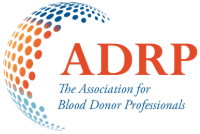The prototypical UK blood donor, homophily and blood donation: Blood donors are like you, not me
Authors:
Eamonn Ferguson, Sarah Bowen, Richard Mills, Claire Reynolds, Katy Davison, Claire Lawrence, Roanna Maharaj, Chris Starmer, Abigail Barr, Tracy Williams, Mark Croucher, Susan R. Brailsford
Background and Objectives
Homophily represents the extent to which people feel others are like them and encourages the uptake of activities they feel people like them do. Currently, there are no data on blood donor homophily with respect to (i) people’s representation of the average prototypical UK blood donor and (ii) the degree of homophily with this prototype for current donors, non-donors, groups blood services wish to encourage (ethnic minorities), those who are now eligible following policy changes (e.g., men-who-have-sex-with-men: MSM) and recipients. We aim to fill these gaps in knowledge.
Results
The prototypical UK blood donor is perceived as White, middle-aged, middle-class, college-level educated and left-wing. Current donors and MSM are more homophilous with this prototype, whereas recipients and ethnic minorities have the lowest homophily. Higher levels of homophily are associated with an increased likelihood of committing to donate.
Conclusion
The prototype of the UK donor defined this as a White activity. This, in part, may explain why ethnic minorities are less likely to be donors. As well as traditional recruitment strategies, blood services need to consider broader structural changes such as the ethnic diversity of staff and co-designing donor spaces with local communities.
June 24, 2024
Related Resources
Engaging blood donors as advocates Social media preferences and associations with marketing
Background: Various critical medical procedures would become impossible without blood donations—saving lives in emergencies, surgeries, and chronic conditions like thalassemia. Therefore, it seems crucial to enhance donor recruitment and ensure…
Rethinking the role of older donors in a sustainable blood supply
INTRODUCTION Many countries, particularly high human development index countries, are facing the challenge of an aging population.1 For Blood Collection Agencies (BCAs) in these countries, an aging population poses two…


